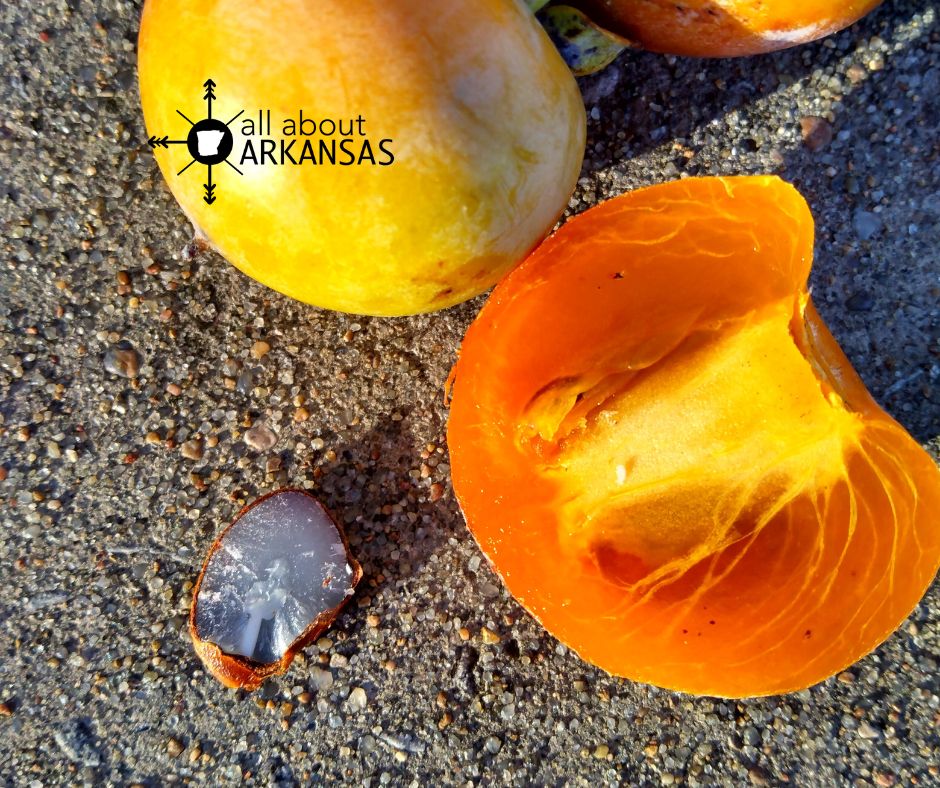Long before the advent of meteorology and sophisticated weather forecasting tools, our ancestors relied on various natural signs to predict the weather. One such age-old practice is the art of reading persimmon seeds to discern whether winter will be harsh, mild or extra snowy.
This unique tradition, popular in some regions of the United States and other parts of the world, has been passed down through generations. In this article, we will explore how to tell winter weather by examining persimmon seeds.
The Persimmon Tree and Its Seeds
The persimmon tree, a deciduous fruit tree commonly found in North America, produces vibrant, orange, tomato-shaped fruits in the fall. Inside these fruits, one can find large, flat seeds.

It is these seeds (rather, the kernels inside) that are used in the practice of predicting winter weather.
Here’s What To Do…
- Gather Persimmon Seeds: To begin, you’ll need fresh persimmon seeds. You can obtain these from ripe persimmons in the fall.
- Examine the Shape of the Kernel: The key to predicting winter weather from persimmon seeds lies in the shape of the kernel within the seed. The kernels can be categorized into three main shapes: spoon-shaped, knife-shaped, and fork-shaped. These shapes are believed to correspond to different types of winter weather.
According to the Farmers’ Almanac: Remove the seeds from a locally grown persimmon and soak them in hot water for about an hour to soften. Gently pry apart the seed’s outer shell (you can use your teeth or a sharp blade —just be careful!) to reveal the shape inside. - Spoon-shaped Kernel: If the kernel inside the persimmon seed is shaped like a spoon, it is thought to indicate heavy, wet snow. This shape is associated with large amounts of snow that can accumulate quickly.
Knife-shaped Kernel: Kernels resembling a knife predict a cold, cutting winter with icy winds. These seeds indicate a season with below-average temperatures and biting cold.
Fork-shaped Kernel: Fork-shaped kernels suggest a mild, pleasant winter with a low likelihood of heavy snowfall. This shape is associated with a more temperate and comfortable winter.

The Science Behind the Tradition
While reading persimmon seeds may seem like a charming folk practice, there is no scientific basis for this method of weather prediction. Weather patterns are influenced by complex atmospheric conditions, and predicting them accurately requires advanced meteorological tools and knowledge.
Nonetheless, the practice of reading persimmon seeds continues as a fun and charming way for communities to connect with nature and their ancestors.
Don’t miss this: What are Winters like in Arkansas?
Will You Try It?
The ancient art of reading persimmon seeds to predict winter weather is a tradition that has been cherished by some communities for generations.
While it lacks scientific validity, it serves as a delightful reminder of our ancestors’ close relationship with nature and their attempts to decipher the mysteries of the weather.
So, if you come across persimmon seeds this fall, don’t hesitate to try your hand at this time-honored practice. Who knows, you might just gain some insights into the upcoming winter while reconnecting with nature and tradition.
You’ll also like this: Does it Snow in Arkansas? – Arkansas Winters

